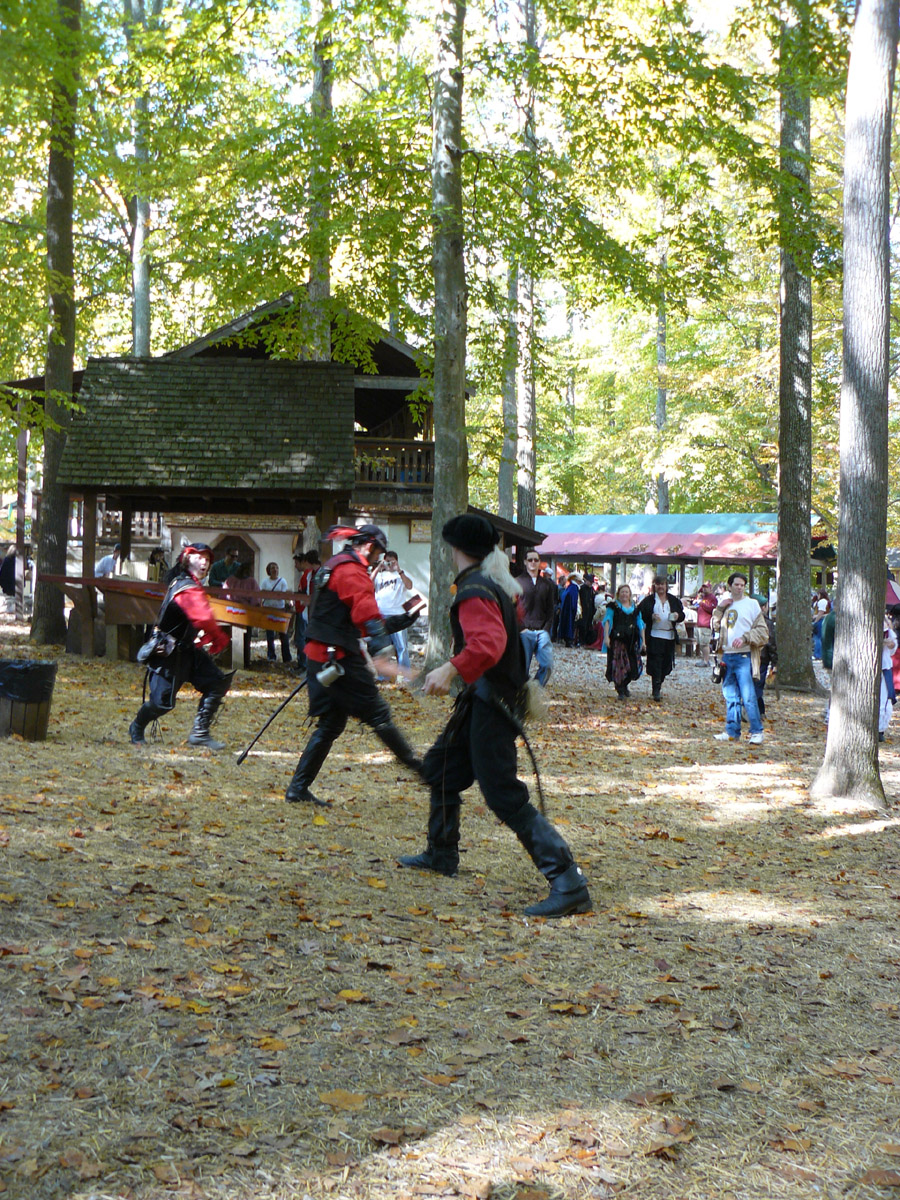![]() Location Taken: Arlington Heights, Illinois
Location Taken: Arlington Heights, Illinois
Time Taken: February 2008
You may have noticed I’ve mentioned Science Fiction Conventions in both of the last two posts. This is not just a coincidence. I’m actually writing this several days in advance (it’s currently Friday the 25th, barely) because I’m going to one of these conventions this weekend, Balticon.
And before I go any further, yes, that is a dog wearing a pirate hat sniffing a stuffed monkey wearing fairy wings. This is normal for Science Fiction conventions. Any other questions?
Science Fiction Conventions are a place for the weirder parts of humanity. Well, at least the weirder parts that like reading Science Fiction and Fantasy books, learning about science and history, creating fantastical art, playing highly complex games, waving around swords, watching nerdy TV shows and movies, and just generally geeking out about such things. And a few others besides, we’re not too picky. In other words, it’s geek nirvana.
It’s still a little odd to me how Geekdom has become more common these days. When I was younger, this wasn’t the case. All the conventions were still small, jocks still lorded it over nerds in schools, and you’d get nothing but weird looks if you went out amongst the normal people in full garb. Garb is sort of like a costume, by the way, but it tends to be higher quality, better researched, and the sort of thing you’d be willing to wear every day if your workplace didn’t have a dress code. Or something like that. I’ve had someone wonder if I was a witch when I was wandering around in my cloak one year, for instance. These days, there’s enough people going to Anime and Gaming conventions (both of which spun off of Science Fiction conventions, but are far more popular) that you’re just as likely to get people saying “Oh, I hadn’t known there was a con in town, which one is it?” as you are to get the really odd questions like “are you Amish?” (Yes, I was asked that one too.)
Admittedly, I don’t really dress up anymore. I’m not big on costumes (or clothes in general. I get all my clothes cheap from Goodwill, and don’t give a figleaf about fashion), and now that my sister’s moved away, I don’t have anyone else going to the convention with me all dressed up.
It’s also a bit awkward to be wearing a cloak all day. There’s a reason they fell out of fashion. Mine keeps half-choking me every time I sit down.
I only go to Balticon each year these days, though there are a lot more conventions out there. We used to go to more, but stopped attending I-Con when the friends we stayed with moved away from Long Island, and we stopped going to Otakon when it got too crowded for us, back around when it broke 10,000 attendees. Yes, ten thousand. It’s now up to 30,000, three times as large.
Balticon, on the other hand, has about 2000 attendees, and it’s large for a Science Fiction convention. Most of them only get about 500-1000 people. It’s the focus on reading and science, really. It just doesn’t bring in quite as many people as more popular things like anime. Which admittedly is why Anime conventions spun off from the Science Fiction conventions a while ago. It really was the Science Fiction community that first discovered anime, and started importing it. For a while you could only find anime at such conventions, shown on projection screens during the con and sold on VHS tapes in the dealer’s room. Then more and more people started noticing how good it could be (for one thing, they were only importing the good stuff), and it became popular. Now it’s everywhere. Certain aspects of the Science Fiction conventions carried over to the Anime conventions as they spun off, like dressing up (admittedly, this was popular in Japan for a long time) and the general panel structure. I’m not that strong of an anime fan these days, though I do still watch it far more often than I do anything else. I haven’t obsessed over a show for a long time, though.
Books, science, and art, on the other hand, I do obsess about. You may have noticed. This puts me firmly in the Science Fiction community camp. And I do so enjoy attending these conventions. That’s why I went to the convention where I took the photo above, Capricon. I was feeling lonely and out of place while in Chicago, so I went to a convention. As soon as I got there, I felt at home, despite never being to this con before. It renewed me at a deep level for a few months, just what I’d needed. There’s something special about going to a place and saying “These, these are my people. I belong here.”




